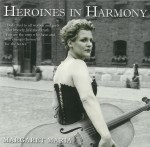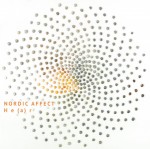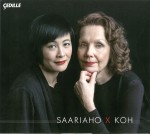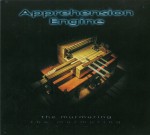One of the most memorable moments while courting my wife Sharon was one evening visiting my friend Sheryl’s mom’s farm in Bowmanville on a warm August summer night back in 1979 or 80. The occasion was a birthday party for one of Sheryl’s brothers – a tradition carried on to this day, now with the most incredible live music gatherings in Sheryl and Brian’s backyard overlooking Musselman Lake. It has become a multigenerational affair and a great time is always had by young and old and everyone in between. But it is that first occasion which has stuck with me over all these years, specifically the visceral experience of hearing Led Zeppelin’s Kashmir blasting out from an incredible sound system set up across farm fields more than a quarter of a mile away. From then on Kashmir became an anthem of sorts for Sharon and me. Since that time I have heard a vast array of interpretations of that iconic work in any number of instrumental combinations. Some of the most effective have been cello ensemble performances, a formation close to my heart, but I must say as impressive as they have been, none hold a candle to the original.
 These thoughts came to me when I put on the latest release from Canadian cellist Margaret Maria – Heroines in Harmony (enchanten.com), which won a silver medal at the Global Music Awards in 2018 – not because it includes the Led Zeppelin classic – it doesn’t – but because of the sheer power of the opening track Stand Tall. As I listened in awe to Maria’s multi-layered cello – a virtual wall of sound – I had no idea of the context of the music. In fine print on the cardboard slip case it states “Each track is honouring a CANADIAN woman who inspires me.” I had to visit the website noted above to find out “Who they are and how the music embodies their legacy.” It turns out that the dedicatee of that most powerful first piece is Buffy Sainte-Marie whose authorized biography by Andrea Warren I had just finished reading (cf. the coincidences/connections I was talking about in December’s column!). Other tracks are inspired by such notables as astronaut Roberta Bondar, Snow Birds commander Maryse Carmichael, ballerina Evelyn Hart and civil-rights icon Viola Desmond, among many others. In an almost industrial setting, Chaos Reigns honours “the creative life force of novelist, poet, inventor and activist,” Margaret Atwood.
These thoughts came to me when I put on the latest release from Canadian cellist Margaret Maria – Heroines in Harmony (enchanten.com), which won a silver medal at the Global Music Awards in 2018 – not because it includes the Led Zeppelin classic – it doesn’t – but because of the sheer power of the opening track Stand Tall. As I listened in awe to Maria’s multi-layered cello – a virtual wall of sound – I had no idea of the context of the music. In fine print on the cardboard slip case it states “Each track is honouring a CANADIAN woman who inspires me.” I had to visit the website noted above to find out “Who they are and how the music embodies their legacy.” It turns out that the dedicatee of that most powerful first piece is Buffy Sainte-Marie whose authorized biography by Andrea Warren I had just finished reading (cf. the coincidences/connections I was talking about in December’s column!). Other tracks are inspired by such notables as astronaut Roberta Bondar, Snow Birds commander Maryse Carmichael, ballerina Evelyn Hart and civil-rights icon Viola Desmond, among many others. In an almost industrial setting, Chaos Reigns honours “the creative life force of novelist, poet, inventor and activist,” Margaret Atwood.
All but two of the 16 tracks are composed and performed by Maria in a brilliant display of virtuosity, both in her command of the cello in all its facets, from warm lyricism to growling grunge, and in her command of technology enabling almost orchestral realizations of her conceptions. The two exceptions are collaborations with flutist Ron Korb: the lush Dream Painting celebrating the unsung life of the painter and writer Emily Carr, and the moving To What End honouring the missing and murdered Indigenous women with its three sections subtitled Death, Darkness, and Spirits Awakening. All in all this is another exceptional outing from Margaret Maria. If she ever does decide to perform Kashmir, Sharon and I will be at the front of the line. Or perhaps across the field letting the waves of sound wash over us in the night.
Listen to 'Heroines in Harmony' Now in the Listening Room
 The Icelandic chamber ensemble Nordic Affect presents a very different celebration of women, in this case Icelandic and Estonian women composers, on the disc H e (a) r (Sono Luminus DSL-92224 sonoluminus.nativedsd.com). Six mostly sparse sonic landscapes are framed and separated by the seven sections of the disc’s namesake, brief poetic statements by artistic director Halla Steinunn Stefánsdóttir. In her introductory statement Stefánsdóttir says “H e (a) r is an ode to hear, here, hér (Icelandic for here) and her. It springs from treasured collaborations that allowed us to ‘send sound and receive sound’ (Pauline Oliveros). We now extend it to you, this meditation on embodiment, acoustics and ecology.”
The Icelandic chamber ensemble Nordic Affect presents a very different celebration of women, in this case Icelandic and Estonian women composers, on the disc H e (a) r (Sono Luminus DSL-92224 sonoluminus.nativedsd.com). Six mostly sparse sonic landscapes are framed and separated by the seven sections of the disc’s namesake, brief poetic statements by artistic director Halla Steinunn Stefánsdóttir. In her introductory statement Stefánsdóttir says “H e (a) r is an ode to hear, here, hér (Icelandic for here) and her. It springs from treasured collaborations that allowed us to ‘send sound and receive sound’ (Pauline Oliveros). We now extend it to you, this meditation on embodiment, acoustics and ecology.”
The award-winning Nordic Affect was founded in 2005 by a group of female period instrument musicians “united in their passion for viewing familiar musical forms from a different perspective and for daring to venture into new musical terrain […] From the group’s inception, [it has] combined new compositions with the music of the 17th and 18th centuries [and] has brought its music making to contemporary and rock audiences alike to critical acclaim.” The booklet is quite extensive, including complete texts for H e (a) r and program notes provided by the composers but contains no biographical information about them. I had to Google Mirjam Tally to find out she is Estonian.
Nordic Affect comprises violin, viola, cello and harpsichord and all four women also vocalize. I must say that in most of the atmospheric compositions included here, only the harpsichord is recognizable with any certainty, although Hildur Guodnadóttir’s Point of Departure uses the instruments in a fairly traditional way. The other works, including two by María Huld Markan Sigfúsdóttir, are more mysterious and ethereal, ambient pastel washes depicting a mystical northern world. Having spent an enchanted ten days touring Iceland with my wife Sharon, Bob Aitken and his wife Marion about a decade ago, memories of that stark and magical landscape came flooding back as I listened to this enthralling disc. Highly recommended!
 I heard a stunning live performance of Finnish composer Kaija Saariaho’s Cloud Trio last March when New Music Concerts presented Trio Arkel – Marie Bérard, Teng Li and Winona Zelenka – at Gallery 345. I was happy to find the string trio included in a new recording by violinist Jennifer Koh, Saariaho X Koh (Cedille CDR 90000 183 cedillerecords.org). Koh is joined by violist Hsin-Yun Huang and cellist Wilhelmina Smith in the four-movement work that begins in a meditative calm, then a Sempre dolce, ma energico movement followed by an energetic third before a tranquil and expressive finale. Next is a one-movement piano trio, Light and Matter, for which Koh is joined by cellist Anssi Karttunen and pianist Nicolas Hodges. This world-premiere recording starts quietly with both the piano and the cellist roiling darkly in their lower registers before the entry of the violin with harmonics and trills high above. Over its 13 minutes there is dramatic development, with furious arpeggiated passages interrupted by pounding piano chords, moments of angst juxtaposed with calm and lyrical intensity. A captivating performance.
I heard a stunning live performance of Finnish composer Kaija Saariaho’s Cloud Trio last March when New Music Concerts presented Trio Arkel – Marie Bérard, Teng Li and Winona Zelenka – at Gallery 345. I was happy to find the string trio included in a new recording by violinist Jennifer Koh, Saariaho X Koh (Cedille CDR 90000 183 cedillerecords.org). Koh is joined by violist Hsin-Yun Huang and cellist Wilhelmina Smith in the four-movement work that begins in a meditative calm, then a Sempre dolce, ma energico movement followed by an energetic third before a tranquil and expressive finale. Next is a one-movement piano trio, Light and Matter, for which Koh is joined by cellist Anssi Karttunen and pianist Nicolas Hodges. This world-premiere recording starts quietly with both the piano and the cellist roiling darkly in their lower registers before the entry of the violin with harmonics and trills high above. Over its 13 minutes there is dramatic development, with furious arpeggiated passages interrupted by pounding piano chords, moments of angst juxtaposed with calm and lyrical intensity. A captivating performance.
The disc also includes a short violin and piano duo, Tocar, with Hodges, and the first recording of the violin and cello version of Aure, originally for violin and viola. The latter was written in honour of Henri Dutilleux’s 95th birthday and takes its material from a line of text from Anne Frank’s diary – “Why us, why the star?” – which Dutilleux set for a single child’s voice in his large orchestral work The Shadows of Time. The question is first asked by the cello alone and then passed back and forth with the violin, transforming according to instructions in the score to be “calm,” then “intense” and “fragile” until the end when there is just a memory of the motif, “just a breath or breeze – aure – now lost in time.”
The most substantial work on this intriguing disc is a chamber orchestra version of Saariaho’s violin concerto, Graal théâtre, a 28-minute work inspired by a novel of Jacques Roubaud of the same name. Saariaho says “I was interested in the combination of the words Graal (Grail) and theatre, thinking of an abstract search for the holy grail – whatever it would mean for each of us – and the concrete art form of the theatre. I imagined the violinist as the main character in a play.” The work was originally written for Gidon Kremer in 1994. Koh first performed it in 2006 with the LA Philharmonic and has played it many times since. This recording features the Curtis 20/21 Ensemble under the direction of Conner Gray Covington. It was recorded at the Curtis School of Music in 2016. The concerto complements the smaller chamber works to present a rewarding portrait of one of the most successful composers of the generation born after the Second World War. The playing is outstanding throughout.
 The final disc, by Guelph’s Silence Collective, is a bit out of my comfort zone, but I found the premise intriguing enough to want to have a go at it myself, rather than assigning it to one of our more specialized reviewers. The Apprehension Engine is a unique all-acoustic instrument originally envisioned by Canadian composer Mark Korven for use in creating “an eerie film soundtrack.” It was realized by master luthier Tony Duggan-Smith and is a strange-looking contraption pictured on the cover of The Murmuring (barcodefreemusic.com). It is comprised of various strings, fret boards, a hurdy-gurdy-like rotator for sustained drones, metal teeth for banging and bowing, thinner wire extensions that act as flexitones, springs and a host of resonators, to mention just some of its potential sound making sources. To get a fuller understanding of this wondrous instrument, check it out on YouTube: Horror Musical Instrument - The Apprehension Engine. It’s hard to tell the scale of it from the image on the CD package, and I imagined the members of the Silence Collective all gathered around the “Engine” and each playing a different aspect of it. Before doing any further research I put on the disc and marvelled at all the different sounds that were seemingly coming out of this one source. It turns out my initial impression was mistaken and that it is just the right size for one performer, Korven himself. The other players – Matt Brubeck (cello), Gary Diggins (trumpet and too many other things to enumerate), Daniel Fischlin (guitar, also constructed by Duggan-Smith, and flutes), Lewis Melville (pedal steel and banjo) and Joe Sorbara (percussion) – all brought their own instruments to interact with Korven in three sets which took place at Silence – an independent, not-for-profit venue in Guelph – one evening in September 2017. The results are beyond my capacity to describe but not to enjoy, and I urge you to do the same.
The final disc, by Guelph’s Silence Collective, is a bit out of my comfort zone, but I found the premise intriguing enough to want to have a go at it myself, rather than assigning it to one of our more specialized reviewers. The Apprehension Engine is a unique all-acoustic instrument originally envisioned by Canadian composer Mark Korven for use in creating “an eerie film soundtrack.” It was realized by master luthier Tony Duggan-Smith and is a strange-looking contraption pictured on the cover of The Murmuring (barcodefreemusic.com). It is comprised of various strings, fret boards, a hurdy-gurdy-like rotator for sustained drones, metal teeth for banging and bowing, thinner wire extensions that act as flexitones, springs and a host of resonators, to mention just some of its potential sound making sources. To get a fuller understanding of this wondrous instrument, check it out on YouTube: Horror Musical Instrument - The Apprehension Engine. It’s hard to tell the scale of it from the image on the CD package, and I imagined the members of the Silence Collective all gathered around the “Engine” and each playing a different aspect of it. Before doing any further research I put on the disc and marvelled at all the different sounds that were seemingly coming out of this one source. It turns out my initial impression was mistaken and that it is just the right size for one performer, Korven himself. The other players – Matt Brubeck (cello), Gary Diggins (trumpet and too many other things to enumerate), Daniel Fischlin (guitar, also constructed by Duggan-Smith, and flutes), Lewis Melville (pedal steel and banjo) and Joe Sorbara (percussion) – all brought their own instruments to interact with Korven in three sets which took place at Silence – an independent, not-for-profit venue in Guelph – one evening in September 2017. The results are beyond my capacity to describe but not to enjoy, and I urge you to do the same.



